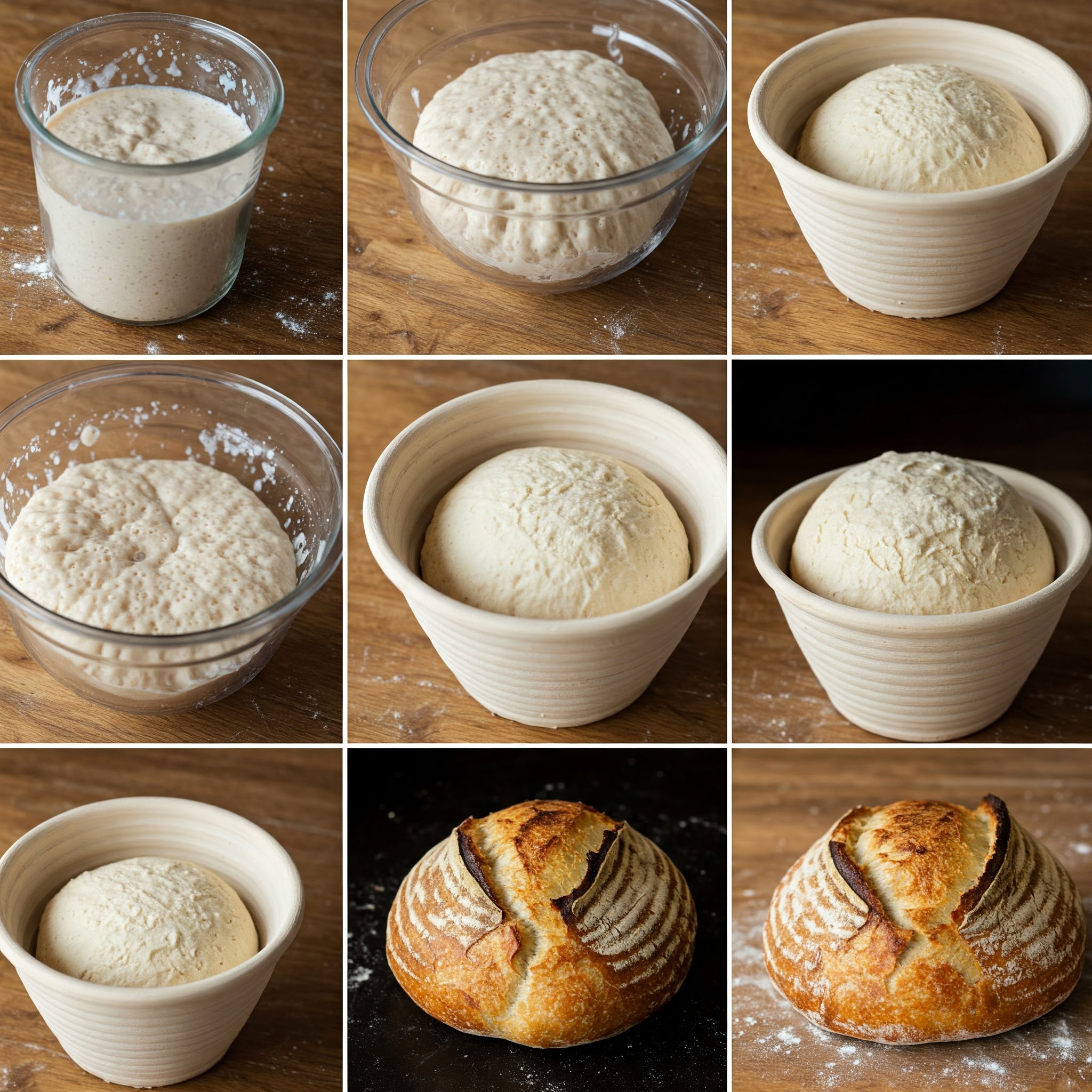The Science of Sourdough Fermentation
"Bread is the king of the table and all else is merely the court that surrounds the king." — Louis Bromfield
The Mathematical Beauty of Fermentation
Sourdough fermentation follows complex mathematical patterns that can be modeled using differential equations. The growth of microorganisms in a sourdough starter can be described by the logistic growth model:
$\(\frac{dN}{dt} = rN(1-\frac{N}{K})\)$
Where \(N\) represents the population size, \(r\) is the growth rate, and \(K\) is the carrying capacity of the environment. This elegantly simple equation describes how yeast and bacterial populations initially grow exponentially but eventually reach equilibrium as resources become limited.
The acid production in sourdough can be modeled as:
$\(pH(t) = pH_0 - \alpha \int_{0}^{t} N(\tau) , d\tau\)$
Where \(pH_0\) is the initial pH, \(\alpha\) is a constant related to acid production rates, and the integral represents the cumulative metabolic activity of the microorganisms over time.
The Fermentation Process Visualized
The sourdough fermentation process involves complex interactions between microbes, enzymes, and environmental factors:
This visualization demonstrates how each stage of fermentation builds upon previous processes, creating the complex flavor and texture profiles that make sourdough unique.
Comparing Sourdough and Commercial Yeast Fermentation
The differences between traditional sourdough fermentation and commercial yeast baking are substantial:
| Aspect | Sourdough Fermentation | Commercial Yeast Fermentation |
|---|---|---|
| Microorganisms | Complex community (yeast + bacteria) | Single strain of Saccharomyces cerevisiae |
| Fermentation time | 4-24+ hours | 1-3 hours |
| pH change | Significant (drops to 3.8-4.5) | Minimal (typically 5.0-5.5) |
| Gluten modification | Extensive protein breakdown | Limited protein modification |
| Flavor compounds | 300+ volatile compounds | ~100 volatile compounds |
| Digestibility | Enhanced through enzymatic activity | Limited enzymatic breakdown |
| Preservation | Natural preservative effect | Rapid staling |
The Biochemistry Behind Flavor Development
The complex flavor profile of sourdough results from numerous biochemical pathways. The probability of specific flavor development can be represented as:
$\(P(flavor) = \frac{e^{\beta_0 + \beta_1x_1 + \beta_2x_2 + ... + \beta_nx_n}}{1 + e^{\beta_0 + \beta_1x_1 + \beta_2x_2 + ... + \beta_nx_n}}\)$
Where \(x_1, x_2, ..., x_n\) represent factors like temperature, hydration, flour type, fermentation time, and microbial composition.
Decision Trees in Sourdough Baking
Every sourdough baker faces numerous decision points that dramatically affect the final loaf:
This decision tree illustrates why no two sourdough loaves are identical, even from the same baker.
The Evolving Understanding of Sourdough Microbiology
Our understanding of sourdough microbiology has developed significantly over time:
Mathematical Models of Microbial Interaction
The interaction between yeast and lactic acid bacteria in sourdough can be modeled using coupled differential equations:
$\(\frac{dY}{dt} = Y(a_1 - b_1Y - c_1L)\)$ $\(\frac{dL}{dt} = L(a_2 + b_2Y - c_2L)\)$
Where \(Y\) represents yeast population, \(L\) represents lactic acid bacteria population, and the coefficients represent growth rates, competition, and symbiotic interactions.
Sourdough as a Complex Adaptive System
The sourdough ecosystem can be viewed as a complex adaptive system with multiple feedback loops:
The Chemical Transformations in Sourdough
Different chemical transformations occur during various phases of sourdough fermentation:
| Phase | Primary Chemical Processes | Key Compounds | Sensory Impact |
|---|---|---|---|
| Initial mix | Enzyme activation | Amylases, proteases | None yet |
| Early fermentation | Starch breakdown | Simple sugars, maltose | Slight sweetness |
| Active fermentation | Microbial metabolism | Lactic acid, acetic acid | Tanginess |
| Extended fermentation | Proteolysis | Free amino acids | Umami, complexity |
| Late fermentation | Alcoholic fermentation | Ethanol, esters | Fruity aromas |
| Baking | Maillard reaction | Melanoidins, pyrazines | Crust aroma, color |
The balance of lactic and acetic acid, which gives sourdough its characteristic flavor, can be modeled by the equation:
$\(\frac{Lactic}{Acetic} = \frac{k_1 \cdot Hydration \cdot Temperature}{k_2 \cdot Oxygen \cdot Time}\)$
Where higher hydration and temperature favor lactic acid production, while more oxygen and longer fermentation times favor acetic acid production.
Looking to the Future
As we gain deeper understanding of the microbiological processes behind sourdough fermentation, new possibilities emerge for customized starter cultures, precision fermentation, and innovative bread products. The intersection of traditional baking wisdom and modern scientific knowledge promises to enrich both our understanding and our enjoyment of this ancient food.
"The future of food lies in the wisdom of our ancestors combined with the science of our laboratories." — Michael Pollan
This article combines rigorous scientific analysis with practical baking insights, illustrating the beautiful complexity hidden within a simple loaf of sourdough bread.
